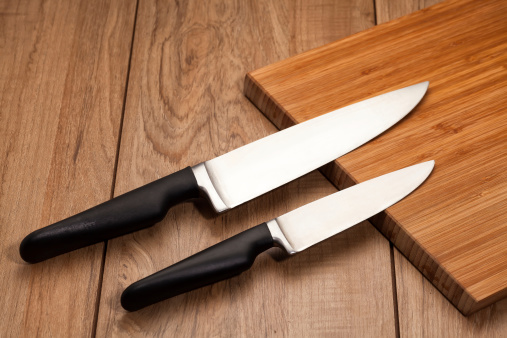Basic Knife Skills : Here’s What You Need to Know
Your chef knife is your portal to fresh food – if you’re going to eat fresh food, you’re going to need to cut it up. Any successful chef, from the home cook to the seasoned pro, needs to know the basics of how to chop, mince, and slice with effective proficiency to be able to make creating delicious dishes efficiently prepared.
While we’ve previously highlighted the knives that we recommend having available in your kitchen (link: https://www.theseasonedchef.com/blog/the-well-stocked-kitchen-the-knife-kit?rq=knife%20skills), we also highly recommend that those just starting to cook with more frequency attends our well-known Knife Skills 101 class (link: https://www.theseasonedchef.com/cooking-classes-calendar/knifeskillsmarch27) where you’ll learn to how to chop, dice, and julienne like a pro.
For those embarking on this journey of learning how to cook, below are some of the most utilized knife skills that you’ll likely recognize from some of your favorite recipes, as well as a quick tutorial on how to hold your knife safely and effectively. Let’s dive in!
How to Hold Your Chef Knife
Proficient cooks use both hands when using their chef knife, with their dominant hand being the one actually gripping the knife in a position we call the “pinch & wrap.” This hand should choke up on the handle and your thumb and index finger should grip either side of the top of the blade, with the base of your index finger resting on the top of the blade. This grip will use the weight of the knife to guide for easiest cutting.
Your other hand should be holding your food in place using a grip called “the claw,” in that your fingertips are slightly curled in so that your fingertips are gripping the food from the top. Your middle finger should be the one that is closest to the knife. This grip will keep your fingertips safe and your food stable for easy cutting.
We also like to remind our knife skills class attendees to “look down, not bend down.” Cutting food can be very trying on your body if you don’t hold the proper stance. Keep your body facing directly towards the cutting board, use a wood, polyethylene plastic or bamboo board whenever possible, and consider either a taller cutting board if you’re tall or a stool if you’re short so that your cutting board will be at a comfortable height.
Common Knife Skills
While there are several different knife skills you can learn, below are the five most common that you will see in the majority of your home recipes.
Slice
Slicing, by definition, is cutting your food into long, thin pieces. The definition is rather broad as to what the thickness of the actual slice should be, so most recipes will provide a bit more detail, such as “cut into thin slices.” Either way, your goal should be to make your slices of an even thickness so that cooking times do not vary too dramatically.
Dice
Dicing is a technique that is usually used on foods that are of a non-flat shape to make them into cubes that can cook consistently. To do so, we usually recommend first slicing the ingredient in a way that makes it flat on one side, such as slicing an tomato down the middle. Lay the food down on the flat side and cross-cut the food by making horizontal slices across the entire length of the food. Then, holding the food in its original shape with your “claw,” slice vertically. Your food is now diced into cubes that will cook uniformly!
Mince
Mincing your food is a method of very finely dicing your preferred ingredients. Depending on the ingredient, this is usually done by first cross cutting your food, then very finely slicing length-wise - similar to dicing, but on a much smaller scale. Once your food is cut into finely cubes, you can pile up the pieces, keep the tip of your knife on the cutting board, and bring your blade down onto the food a few times to make your cubes even smaller. Repeat this method of piling/chopping three-to-four times until your minced pieces are of the desired size.
Julienne
To julienne your food is to cut it into short, match-stick sized pieces. To do so, we typically recommend first thinly slices your food vertically into long slices. Then you can stack your slices and cut them horizontally into slices that are about two inches long. This long, thin cut will allow your ingredients to cook rapidly and evenly, as well as making it a delicate garnish if you just want to add a touch of flavor.
Chiffonade
We usually use “chiffonade” in relation to herbs and leafy greens in recipes. To do so, you bunch your herds or greens together into a tight, vertical bunch, keeping all five fingers of your “claw” on your food. You then tightly slice the food into small, almost shredded pieces that can either be used as a lovely garnish, or they can be immediately used to flavor everything from soups to salads. This should be one of the last steps of your cooking process, as this cutting technique does cause the edges to brown slightly quicker than usual, but the flavor will be extra delicious.
Did You Know…
While we review knife skills before every class, our incredibly popular Knife Skills 101 class is taught monthly and is the best way to learn all about these knife techniques, as well as how to store and sharpen your knives safely and effectively. Sign up for this class and learn more detail by clicking here

